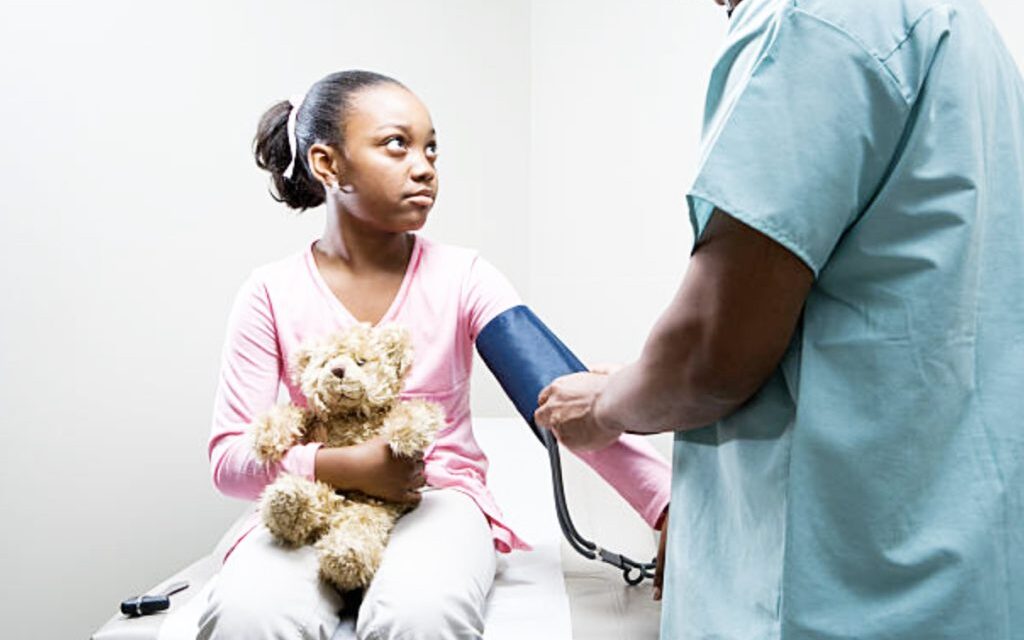by Jason Henderson
High blood pressure – sometimes referred to as “the silent killer” because it can do serious heart and brain damage before symptoms appear – is common in adults.
But what about children?
Among U.S. children and adolescents, up to five percent have high blood pressure – also known as hypertension – and as many as 18 percent have elevated blood pressure, according to a scientific statement from the American Heart Association published recently in its journal Hypertension.
Until recently, medical experts weren’t focused on hypertension as a childhood issue, says Dr. Bonita Falkner, writing committee chair for the statement. In fact, they weren’t even sure how to diagnose it in children and didn’t look for it unless the child had an underlying condition – such as kidney disease – that might cause blood pressure levels to climb.
Falkner says concerns about childhood hypertension have increased as childhood obesity levels in the U.S. have reached alarming levels. Being overweight and not getting enough physical activity are major risk factors for hypertension, along with poor diet.
“A lot of the same things that cause hypertension in adults can cause it in children,” according to Dr. Andrew Tran, director of preventive cardiology at the Heart Center at Nationwide Children’s Hospital in Columbus, Ohio.
Over the past three decades, childhood obesity in the U.S. has doubled, up to nearly 20 percent based on the latest data from the Centers for Disease Control and Prevention. Physical activity levels have remained well below federal guidelines: Only about one-fifth of kids ages six to 17 get the recommended 60 minutes of physical activity each day, with activity levels dropping as children age. And according to the CDC, younger children in the U.S. aren’t meeting federal guidelines for eating fruits and vegetables, while regularly consuming sugary beverages.
Conditions such as heart defects and kidney disease also can cause blood pressure to rise in children.
The dangers of high blood pressure in children
Developing high blood pressure in childhood is especially concerning, Tran shares because the longer blood pressure remains high, the greater the risks to the heart and blood vessels in major organs, such as the brain and kidneys.
“We know that kids who have high blood pressure also tend to have it as adults,” says Tran, who co-authored the recent AHA report.
Research has long established a link between high blood pressure in adults and an increased risk for problems such as heart attacks, strokes and kidney disease. Thresholds for diagnosing high blood pressure are based on this data. In adults, blood pressure is considered high if systolic levels (the top number) are 130 mmHg or more or diastolic levels (the bottom number) are 80 mmHg or higher. Normal blood pressure in adults is less than 120/80 mmHg.
Until recently, data linking blood pressure levels to later cardiovascular events was lacking for children. But studies published over the past few years provide growing evidence that high blood pressure in childhood can cause cardiovascular harm within a few years and increase the risk of cardiovascular disease in adulthood. Based on this data, the new AHA report defines high blood pressure for children 13 and older using the same thresholds as it does for adults.
Monitoring high blood pressure in children
For children under 13, hypertension is diagnosed if either systolic or diastolic blood pressure is at or above the 95th percentile, meaning 95 percent of other kids of the same age, sex and height have a lower blood pressure. Normal blood pressure is defined as being below the 90th percentile.
Taking blood pressure measurements in a child is done much the same as it is for an adult, Tran notes. The child should be seated in a quiet room, at rest for three to five minutes before a reading is taken. Their feet should be flat on the floor and their back supported. There should be no distractions, such as digital devices, and the child should not speak while a reading is being taken.
American Academy of Pediatrics guidelines call for an appropriately sized cuff to be placed on the bare skin of the right arm and supported so that the middle of the cuff is at heart level. Measurements should be taken on at least three different days, since readings can vary.
When measurements are higher than normal, the average should be calculated. Home and ambulatory blood pressure measurement devices may help confirm a diagnosis of hypertension.
As with adults, treatment for high blood pressure in children should begin with lifestyle changes, including getting regular physical activity and improving the diet, Tran says. “We recommend dietary changes such as eating more fruits and vegetables and reducing sodium.”
If blood pressure is confirmed to be very high or remains high despite lifestyle changes, medication may be needed, Tran notes.











